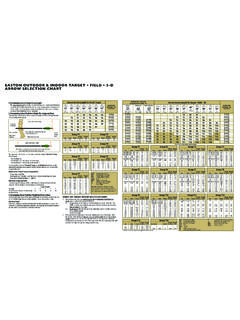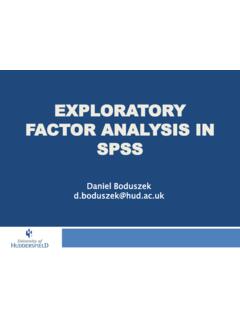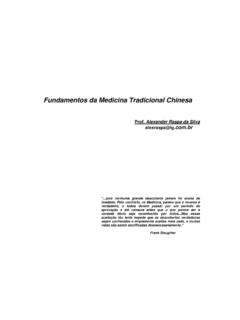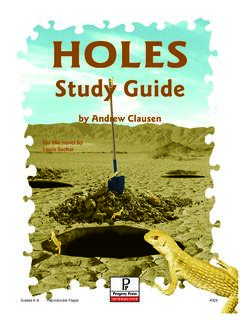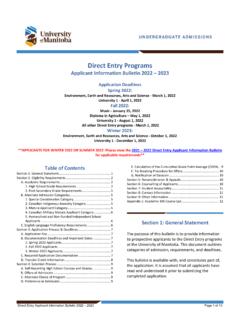Transcription of 9th Grade Physical Science Final Exam
1 W w w . t h m s a d a g r o u p . o r g 2013 9th Grade Physical Science Final Exam FTSO nline Homeschool Assistance Read Carefully! THM Sadaqa Group FTSO nline End of Course Exam Bismillahir Rahmanir Rahim Assalaamu Alaikum wa Rahmatullahi wa Barakaatuh High School Subjects for this Assessment - Tuesday, April 23, 2013 Read Carefully Students have one class period to complete the entire test. This exam focuses on your understanding of Physical Science , and a continuation for the comprehension of Vocabulary. The Exam counts as 20% of your Final Grade for the year. Do not leave and question unanswered. Part 1: Physical Science Students are instructed to provide a detailed response to each question, that includes restating the question or through inclusion of specific details from the question within your answer. The following questions are designed to test your comprehension of subjects through generated responses and scientific vocabulary usage.
2 Your responses earn 0-2 pts. per item. 1. Describe the two major branches of Physical Science . _____ 2. Give two examples that highlight the differences between Science and technology. _____ 3. What is the scientific method? _____ 4. What is an observation? _____ 5. What is a hypothesis and how is it related to a theory? (2 part question) _____ 6. What is an experiment? _____ 7. Why do scientists need a standard set of measurements? _____ 8. Name four units of measurement and the quantity that each represents. _____ 9. What is the difference between mass and weight? _____ 10. A pH meter measures the _____ of a substance. 11. Describe ways in which computers can be used in Physical Science . _____ 12. A student uses two identical balls to perform an investigation. The student throws ball A with a horizontal velocity from a height of 10 meters.
3 At the same time, another student drops ball B from the same height without any horizontal velocity. Neglecting air resistance, which best describes the results? A Ball A will hit the ground first. B Ball B will hit the ground first. C Both balls will hit the ground at the same time. D Ball A will take twice as long to hit the ground. Use the terms accuracy, measurement, scientific notation, and significant digits to complete the following paragraph. 13. An observation that has numerical value is called _____. How close a measured value comes to a true value is called _____. When reading a measurement, a scientists looks at a number s _____. In the system of _____ numbers are exposed as products of a number between 1 and 10 multiplied by a power of 10. 14. What are some of the safety precautions you should take before you begin work in a Science laboratory?
4 15. Physical scientists may record measurements in different forms, such as whole numbers, fractions, decimals, and scientific notation. The chart below shows the same measurement written in four different forms. Change each number to fractions, decimals, and scientific notation forms. Convert all length measurements to meters. Convert all mass measurements to kilograms. Some of the problems have been completed for you. Original Number Fraction Decimal Scientific Notation 1 cm 1/100 m 1 x 10-2 m 26 cm 792 cm 1,666 cm x 106 cm 1 mm 83 mm 514 mm m 6,722 mm x 103 mm x 105 mm km km x 104 m 3, km 1 g 413 g 7, 198 g 7, 198/1,000 kg 16. A car starts from rest and accelerates uniformly at m/s/s. How long will it take to read a speed of 34 m/s? a. 200 s b. 58 s c. 20 s d. 2 s 17. List the four states of matter and give the properties of each.
5 _____ 18. Compare elements, compounds, and mixtures. _____. 19. What is the formula to find the density of a substance? 20. What is specific gravity? 21. What are the differences between Physical changes and chemical changes? 22. Explain why a solid melts when it is heated. 23. Examine the periodic table below and then classify the elements listed as metal, --nonmetal, --noble gas, or metalloid. (Increase the size of the page if you cannot see the table.) Sodium (Na) Carbon (C) Copper (Cu) Calcium (Ca) Iron (Fe) Lithium (Li) Polonium (Po) Nitrogen (N) Sulfur (S) Fluorine (F) 24. What are the main points of Dalton s atomic theory? 25. Bohr s changes in Rutherford s model of the atom involved the a. structure of the nucleus b. number of particles c. electrical charges of particles d.
6 Motion of electrons 26. Describe energy levels of electrons. 27. Look at the diagram. Then read the questions that follow. Choose the term or phrase that best answers the question or completes the statement. Write the letter of that choice in the space to the left. ____ 1. What is the mass number of this atom? a. 9 b. 12 c. 17 d. 19 ____ 2. The atomic model shown is most like the model proposed by: a. Democritus b. Bohr c. Dalton d. Thomson ____ 3. The atom shown is classified as a: a. metal b. metalloid c. nonmetal d. silicon 28. What is the name for the atom displayed in the diagram/picture above? Part 2: Physical Science Fill in the blanks. Please keep in mind that the isotope represented by each space may NOT be the most common isotope or the one closest in atomic mass to the value on the periodic table. Atomic symbol Atomic number Protons Neutrons Electrons Atomic mass B 6 11 24 31 37 39 89 29 35 43 100 Pb 207 102 70 89 225 Mo 53 81 206 100 159 No 261 Yb 172 106 159 29.
7 What is the law of conservation of mass? 30. What did Thomson s cathode ray experiment prove? 31. How many protons, neutrons, and electrons does an atom of 261Rf have? Protons: _____ Neutrons: _____ Electrons: _____ 32. What is the general equation for determining the average atomic mass of an element from its isotopic abundances? 33. What is a line spectrum, and what can it be used for? 34. What is a probability distribution? 35. What s the abbreviated electron configuration of copper? 36. What group on the periodic table comprises the alkali metals? _____ 37. What do elements in the same period have in common with one another? 38. Why are ionic compounds hard and brittle, while covalent compounds are relatively soft and squishy? 39. Name the following chemical compounds (1 pt. each) NaBr _____ PBr3 _____ H2SO4 _____ BF3 _____ MnO2 _____ 40.
8 Write the formulas of the following chemical compounds (1 pt. each) phosphoric acid _____ oxygen difluoride _____ chromium (IV) nitride _____ silicon tetrachloride _____ ammonia _____ This exam is not complete as of Continue for Part 3 below: Part 3: Physical Science Write any corrections you may have below. Use extra space for calculations if needed.


